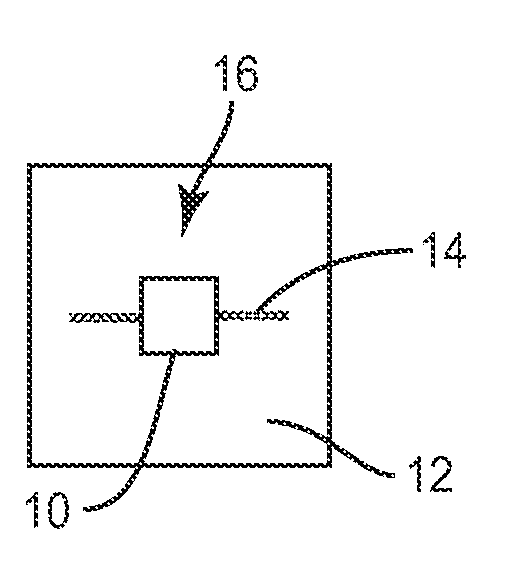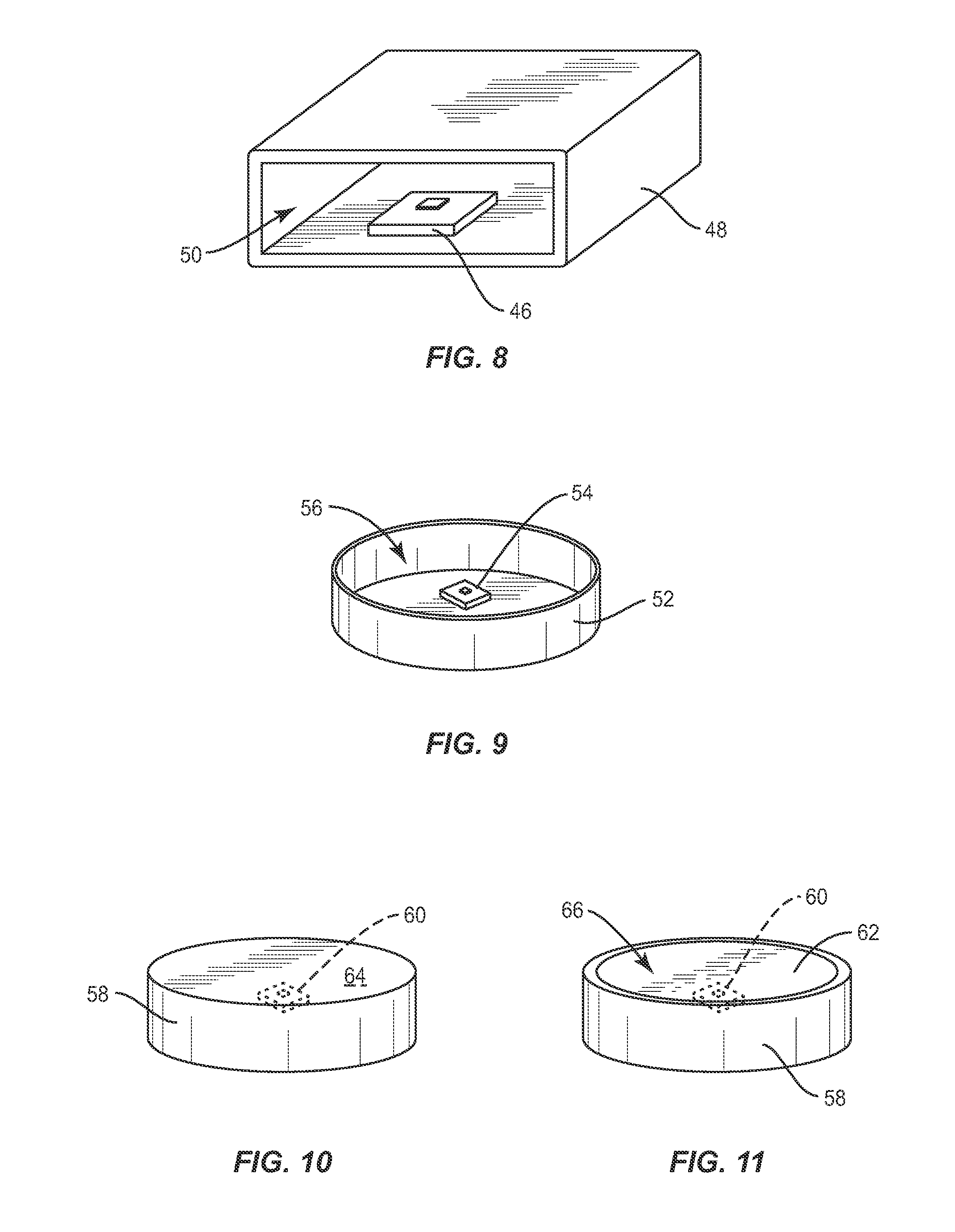Radio frequency identification tags and methods employing ceramic components, which may be suitable for use in extreme environmental conditions
a technology of radio frequency identification and ceramic components, which is applied in the direction of antenna details, instruments, antennas, etc., can solve the problems of increasing the cost of rfid tags, affecting the use of rfid tags, and prone to cracking
- Summary
- Abstract
- Description
- Claims
- Application Information
AI Technical Summary
Benefits of technology
Problems solved by technology
Method used
Image
Examples
Embodiment Construction
[0010]Embodiments discussed herein include a radio frequency identification (RFID) chip may be attached to a ceramic film or substrate having an antenna printed thereon to form an RFID tag. The RFID tag may then be positioned in a metal recess and covered with a heat tolerant epoxy. The epoxy fixedly positions the RFID tag within the confines of the metal recess. Despite being within the metal recess, the RFID tag may still respond to interrogation.
[0011]In another embodiment, an RFID tag that may be positioned inside a metal shell is discussed. The metal shell may be affixed to an object in a hazardous environment. While it is generally understood that metal placed between an interrogator and an RFID tag typically blocks communications with the RFID, according to embodiments of the present disclosure, the shell helps act as an antenna for the RFID tag to allow the RFID tag to be interrogated despite being protected within the metal shell.
[0012]A radio frequency apparatus, comprisin...
PUM
| Property | Measurement | Unit |
|---|---|---|
| sizes | aaaaa | aaaaa |
| thicknesses | aaaaa | aaaaa |
| thicknesses | aaaaa | aaaaa |
Abstract
Description
Claims
Application Information
 Login to View More
Login to View More - R&D
- Intellectual Property
- Life Sciences
- Materials
- Tech Scout
- Unparalleled Data Quality
- Higher Quality Content
- 60% Fewer Hallucinations
Browse by: Latest US Patents, China's latest patents, Technical Efficacy Thesaurus, Application Domain, Technology Topic, Popular Technical Reports.
© 2025 PatSnap. All rights reserved.Legal|Privacy policy|Modern Slavery Act Transparency Statement|Sitemap|About US| Contact US: help@patsnap.com



